
The Display Network offers many different options, each appealing to different types of goals
The Display Network is sometimes a throwaway targeting method for beginner marketers – they’re not sure how to use it in order to meet their goals, and are put off when it doesn’t work in the same way as Search. However, when used correctly, the Display Network can be an effective part of many marketing strategies, especially when visuals are an important part of your product.
To get the most out of the Display Network, all of the strategies outlined below should be separate campaigns from Search – this is done both for better performance and organization within your account.
Group keywords by matching categories, not words
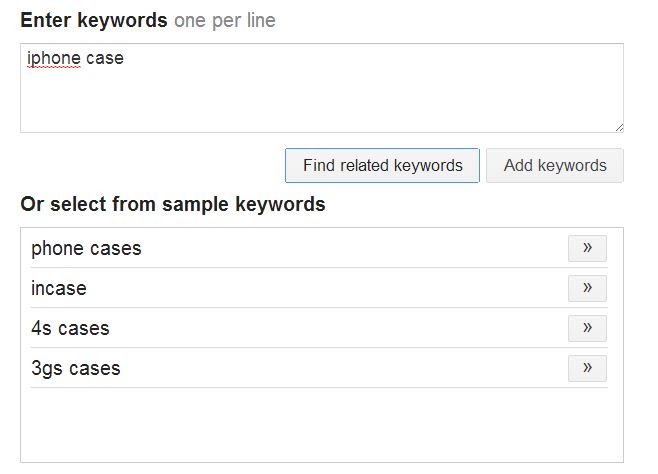
Think about the overall theme of the group as well as each unique keyword
Keyword targeting is much more group-oriented than it is in search, and while AdWords has made improvements with how particular keywords are associated with particular sites, Display Network keywords still work differently from search.
When grouping keywords, keep in mind category themes rather than keyword-based themes. While “iPhone 5C case” and “iPhone 5C cover” would work better in different groups in Search (to better take advantage of the bolding that occurs with keyword matching), they are better grouped together in Display. Grouping in this way will place the focus on the iPhone 5C as the important part of your ad rather than the “case” part.
This is important to do because all keywords are considered broad-match in the Display Network. Exact-match and phrase-match keywords do work, but because the overall theme is more important when placements are selected, changing the match type makes little difference. Negative keywords perform the same, and your ads will
Remarketing – For branders and direct marketers
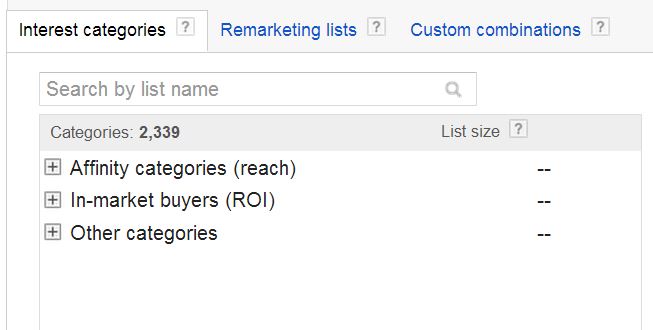
Using custom combinations is great if you want to target only certain visitors
Remarketing is a very effective tactic for both branding and direct marketing purposes, and depending on where you place your remarketing cookie, you can either increase frequency or decrease the amount of not-quite-converters.
For brand marketers, set up remarketing to all visitors and emphasize the message of your brand in your ads. Set the frequency of your ads (in campaign settings) to a maximum amount. This will prevent your ads from showing to just one person dozens of times, reducing the amount of users it could show to elsewhere. Since the effectiveness of ad frequency tend to wear off after 3 views, a maximum frequency of 3-8 for brand marketers is recommended.
For direct marketers, remarketing is best when you have visitors that have almost converted, but trickled off at some point. Remarketing can now be set to trigger after the visitor has taken a certain action or even visited a certain amount of pages. In other words, you can target all non-bounce traffic. By setting up a custom combination (done in the Shared Folder) you can choose what type of user to target without the need to set up a page just to trigger the remarketing code.
Placement Targeting for added control
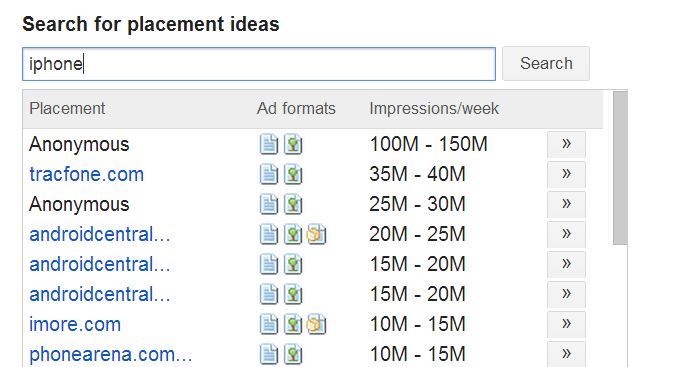
Take the suggestions for placements with a grain of salt
Placement targeting is by far the easiest way to take full control of Display Network marketing, and its effectiveness is dependent on your research skills. While the placement tool in AdWords does provide suggestions based on keywords you type in, they’re not always the most useful, or even very relevant.
Instead, it much more effective to develop a long list of websites that you want to target on, and see which of those use AdSense to display their advertising. This way, you’ve chosen sites based on their actual relevance and not based on “that’s all I could find in the placement tool”.
Take advantage of targeting particular pages and not just domains. A large site like newyorktimes.com likely has only a category dedicated to your vertical and would likely be far less competitive than targeting the front page.
A note on “target and bid” vs. “bid only”: if you are only using placements as your targeting, “bid only” acts the same as “target and bid”. “Bid only” allows you to up or lower bids on certain placements if you happen to appear on them through the other targeting types (which are all automatic placement).
Making Topic Targeting more targeted
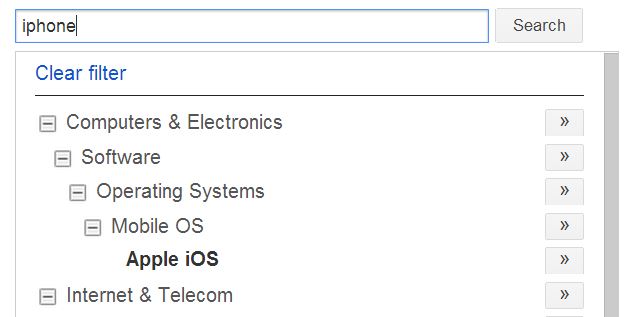
The topics used can be quite broad, and is best used in combination with other targeting options.
Topic targeting can be very expansive and useful for branding, but for the direct marketer, it needs to work with other targeting methods to be used effectively. The websites chosen when using topic targeting are based on either:
- What the website owner decided; or
- What AdWords determined their website was about based on its content.
Both of these leave a lot open for interpretation. Because of this, topic targeting is very impression heavy, with some of the lowest clickthrough rates of all Display Network targeting. There are hundreds of topics, and some can get quite specific – if you choose only topic targeting, one of the sub-categories would be better suited for your needs, even as a brand marketer.
For direct marketers, topic targeting is best combined with other targeting methods, and can be done in a couple of ways.
Combining targeting methods
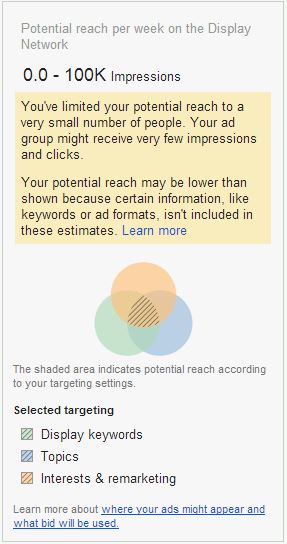
Don’t limit yourself too much, or nothing will happen
To get the most targeted traffic, consider combining the different types of targeting methods above – this is a great method for direct marketers. When more than one targeting options is chosen in an ad group, AdWords will target the website that either matches all of the options (i.e. Target and Bid) or just one of the methods with bid adjustments when the other options match (i.e. Bid only).
For direct marketers, this is the most effective method for the Display Network because only the most relevant websites will result in conversions. It can also make Placement targeting easier for those who want to target a particular category on a website, but are not sure of the pages (e.g.) Halloween articles on a crafting website).
Keep in mind that the more targeting options selected, the more limited the available pool of websites becomes. There should be a balance between the amount of traffic your ad group receives and the relevancy of the traffic, or else you won’t appear on any websites.
Demographic and Interest Targeting for branding purposes
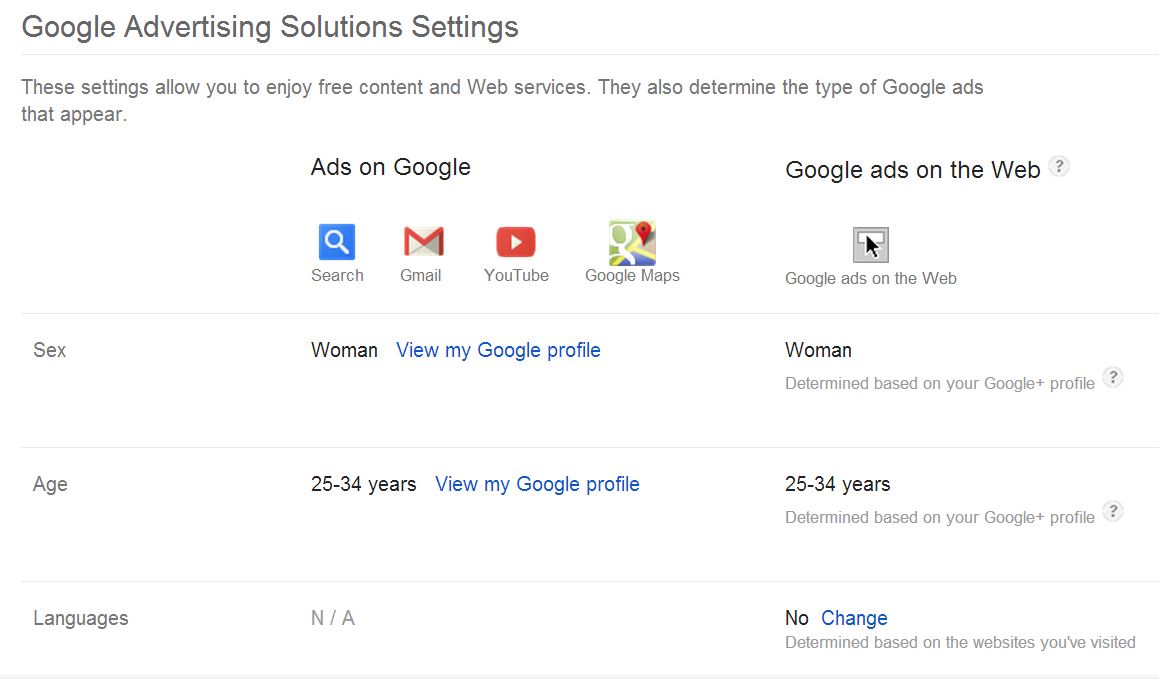
Ad Settings will give you an idea on how demographic targeting works. Here’s my stats!
Demographic targeting works like remarketing, but in a broader sense, and choosing which demographics to use requires knowledge of how AdWords determines what demographics these visitors are. To take a look at your own Google Ad Settings, check out this link (you must be logged it for it to show anything).
For Age and Gender targeting, visitors are targeted based on the information they provide on their Google profile OR the age and gender that’s implied through their website browsing history. Interested in makeup and college? You may be an 18-24 year old female to Google, even if you’re not. Keep this in mind if you decide to use this type of targeting.
Interest categories are determined in a similar way, but there is the option to opt-out of these. While this could render interest category targeting less effective, generally, interest targeting is not very effective for direct marketers, and is a slightly better version of topic targeting for brand marketers.
Image ad formats and strategies

The image ad builder…is generally not recommended, to say the least
The biggest advantage of the Display Network is the ability to use more traditional banner ads, and without them, the effectiveness of the Display Network is lowered. Text ads are effective because there’s a much larger variety of websites that accept that format, but should not be used in place of image ads when they are accepted.
For brand marketers, it’s very important because your brand image is easily displayed, and an image is going to be far more memorable to a visitor than words. For a direct marketer, an image ads will generate more visits – it’s hard to get someone to stop and read your text ad when they’re looking at other content.
Additionally, some spots available on the Display Network are for image ads only, and you don’t want to limit your ad serving based only on the format of your ads. It’s a worthwhile investment to have your ads designed by a professional – while the image ad builder is available, there are limitations to the positioning of the images and text, and the amounts that you can have depend on the templates.
Adsenseformobileapps.com and other exclusions
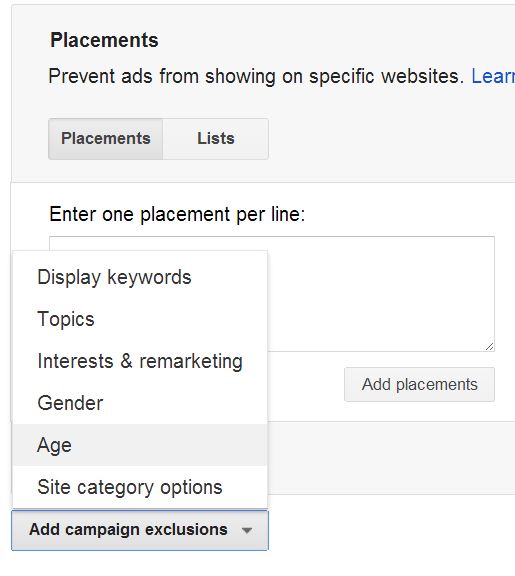
Exclusions are available for all placement types
While working as a salesman for Google AdWords, we had several small optimizations that we recommended for clients setting up a Display Network campaign. The most important one was adsenseformobileapps.com – this website tracked impressions and clicks for ads showing up on apps (think free iPhone apps). Unless your product is an app or directly related to mobile phones, this can lead to a lot of wasted clicks; people tend to tap them accidentally when they’re just trying to get to their application or use it.
All targeting options can be used as exclusions, and this is often a good way to limit traffic without overdoing it like combining target options often can. It’s a good idea to check which websites you’re appearing on (like a search terms report, but for Display) and filter out ones that aren’t relevant enough or are performing poorly. Sometimes, bad ad positioning can make a really relevant site not worthwhile to advertise on, especially if you’re using CPM bidding.
[separator top=”30″ bottom=”20″ style=”single”]
